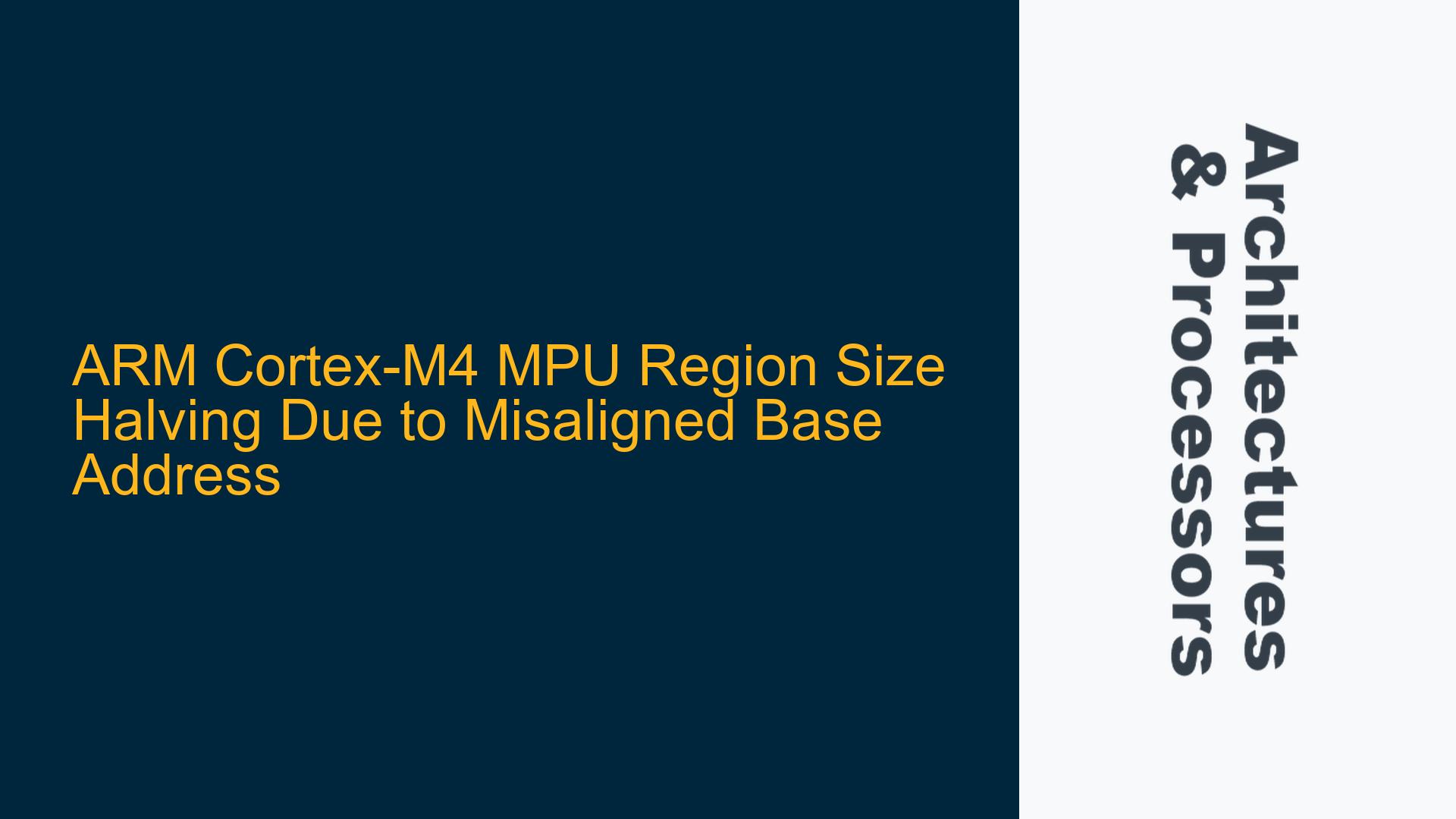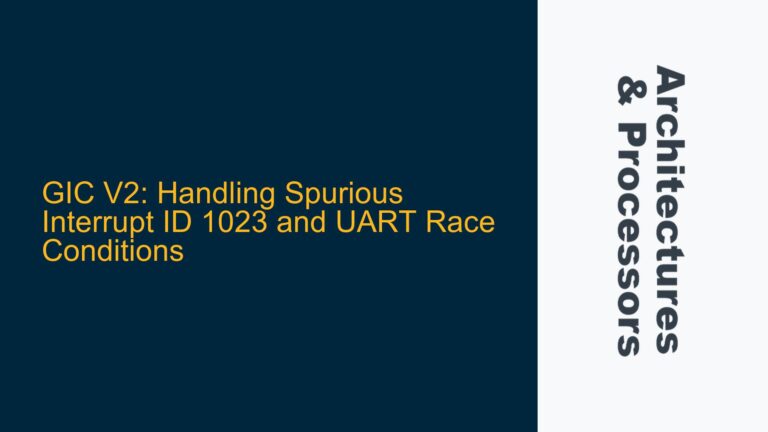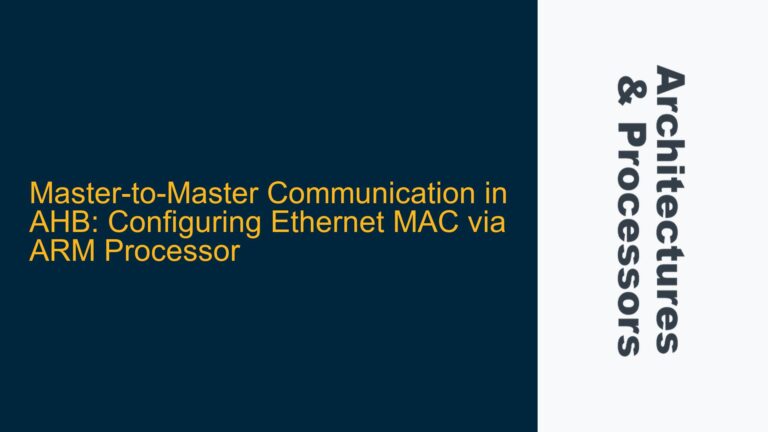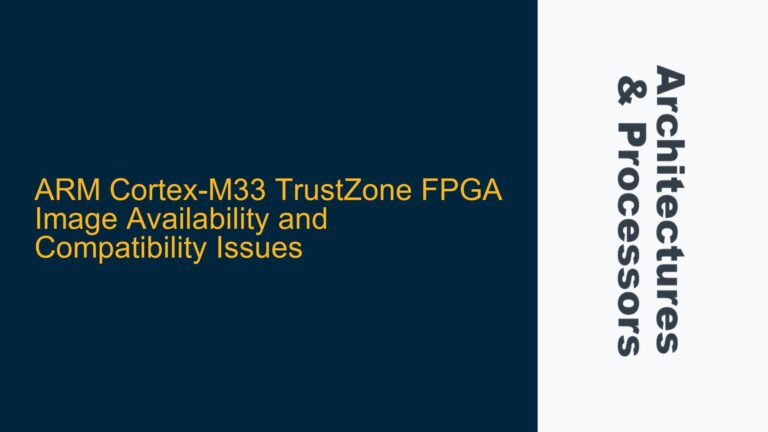MPU Region Size Halving and Memory Management Faults in Cortex-M4
The ARM Cortex-M4 Memory Protection Unit (MPU) is a critical component for ensuring memory safety and access control in embedded systems. However, improper configuration of the MPU can lead to unexpected behavior, such as memory management faults or incorrect region sizing. In this case, the issue manifests as an apparent halving of the MPU region size, where a region configured for 0x100 bytes only effectively covers 0x80 bytes. This behavior is not a hardware bug but rather a consequence of misaligned base addresses relative to the region size. Understanding the root cause and implementing proper alignment is essential for reliable MPU operation.
Misaligned Base Address Relative to Region Size
The ARM Cortex-M4 MPU requires that the base address of a memory region be naturally aligned with respect to the region size. Natural alignment means that the base address must be a multiple of the region size. For example, if the region size is 0x100 bytes, the base address must be a multiple of 0x100 (e.g., 0x2001_fd00, 0x2001_fe00, etc.). Failure to meet this requirement results in the MPU internally adjusting the effective region size, often halving it to the next smaller power-of-two alignment.
In the described scenario, the base address of region 3 is 0x2001_fd80, and the region size is configured as 0x100 bytes. However, 0x2001_fd80 is not a multiple of 0x100. The MPU enforces alignment by reducing the effective region size to 0x80 bytes, which is the largest power-of-two size that aligns with the base address. This adjustment explains why memory accesses beyond 0x2001_fdff result in a memory management fault, while accesses within 0x2001_fd80 to 0x2001_fdff succeed.
The alignment requirement is documented in the ARM Cortex-M4 Technical Reference Manual (TRM), but it is often overlooked during MPU configuration. The MPU does not generate an explicit error or warning for misaligned base addresses; instead, it silently adjusts the region size, leading to subtle and hard-to-debug issues.
Correcting MPU Region Configuration with Proper Alignment
To resolve the issue, the base address of the MPU region must be aligned to the configured region size. This involves recalculating the base address to ensure it meets the alignment requirement. For example, if the desired region size is 0x100 bytes, the base address must be a multiple of 0x100. In the case of region 3, the base address should be adjusted from 0x2001_fd80 to 0x2001_fd00 or 0x2001_fe00, depending on the memory layout and application requirements.
The following steps outline the process for correcting the MPU region configuration:
-
Determine the Desired Region Size: Identify the required region size based on the memory range that needs protection. The region size must be a power of two, and the base address must be aligned to this size.
-
Calculate the Aligned Base Address: Adjust the base address to the nearest lower or upper multiple of the region size. For example, if the desired base address is 0x2001_fd80 and the region size is 0x100, the aligned base address options are 0x2001_fd00 or 0x2001_fe00.
-
Update the MPU Region Configuration: Modify the MPU Region Number Register (RNR), MPU Region Base Address Register (RBAR), and MPU Region Attribute and Size Register (RASR) to reflect the aligned base address and correct region size. Ensure that the region attributes (e.g., access permissions, cacheability) are preserved during this update.
-
Verify the MPU Configuration: After updating the MPU registers, verify that the region is correctly configured by performing memory accesses within and outside the region boundaries. Use a debugger or memory inspection tool to confirm that the MPU enforces the expected access controls.
-
Handle Overlapping Regions: If the aligned base address results in overlapping regions, adjust the configuration of adjacent regions to avoid conflicts. The ARM Cortex-M4 MPU supports up to eight regions, and overlapping regions can lead to unpredictable behavior.
The following table summarizes the key MPU registers and their roles in region configuration:
| Register | Description | Example Value |
|---|---|---|
| RNR | Specifies the region number being configured. | 0x0000_0003 (Region 3) |
| RBAR | Specifies the base address of the region. Must be aligned to the region size. | 0x2001_fd00 (Aligned base address) |
| RASR | Specifies the region size, attributes, and enable bit. | 0x1306_000f (Size = 0x100, attributes = 0x1306) |
By following these steps and ensuring proper alignment, the MPU region size halving issue can be resolved, and the memory protection mechanism will function as intended. Proper MPU configuration is critical for achieving reliable and secure embedded systems, particularly in safety-critical applications where memory access violations can have severe consequences.
In addition to alignment, developers should also consider the following best practices when working with the ARM Cortex-M4 MPU:
- Use the Smallest Sufficient Region Size: Configure regions to cover only the necessary memory ranges. Smaller regions reduce the risk of unintended overlaps and improve MPU efficiency.
- Enable the MPU Early in the Boot Process: Activate the MPU as soon as possible during system initialization to ensure memory protection is in place before any critical operations begin.
- Test MPU Configuration Thoroughly: Validate the MPU setup by performing extensive testing, including edge cases and boundary conditions, to ensure robust operation under all scenarios.
By adhering to these guidelines and understanding the alignment requirements of the ARM Cortex-M4 MPU, developers can avoid common pitfalls and leverage the full capabilities of the memory protection unit to enhance system reliability and security.






